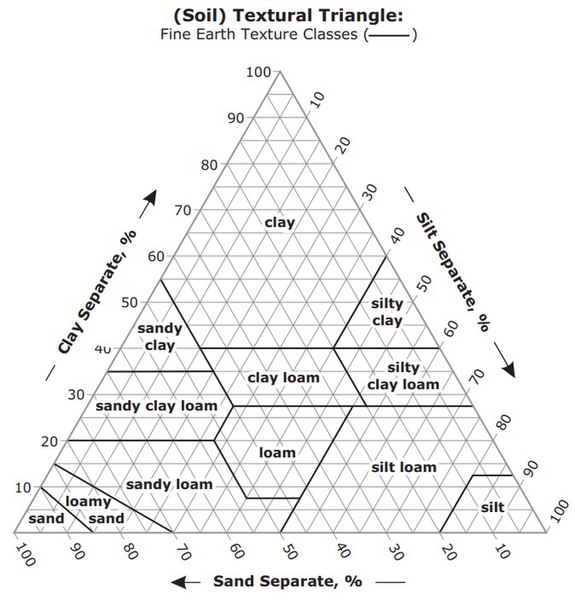Soil texture refers to its percentage of sand, silt, and clay, which are types of mineral particles defined by their size. Clay particles are smaller than 0.002 mm and give soil a smooth and sticky texture when wet that can hold a ribbon shape. Silt particles are bigger than clay but smaller than 0.05 mm and have a consistency like flour. When wet, silty soils can hold together as a ball but fall apart when squeezed to a ribbon. Sand particles are bigger than silt but smaller than 2 mm and give soil a gritty texture. Mineral particles bigger than sand are classified as gravel and aren't considered soil anymore.
Your soil texture will impact many aspcts of gardening and lawn care. For example, a sandy soil will drain much faster than a silty or clayey one and will need to be watered more frequently--consider amending with organic matter such as compost to improve water retention. A clayey soil will have higher CEC and buffering capacity and will take more lime to neutralize acidity or sulfer to neutralize alkalinity--consider choosing garden crops that are suited to the pH of your clayey soil since it may be difficult to change.
At SoilKit, we're here to help if you have any issues or concerns related to how your soil texture affects your lawn or garden goals!
Click here to learn more about soil texture and other soil physical properties from the Soil Science Society of America.

Image source: USDA-NRCS
Note: soil texture may be easily confused with soil structure. Put simply, soil texture refers to what components make up the soil, while soil structure refers to how those components are arranged. Click here to learn more about soil structure.

Comments
0 comments
Please sign in to leave a comment.